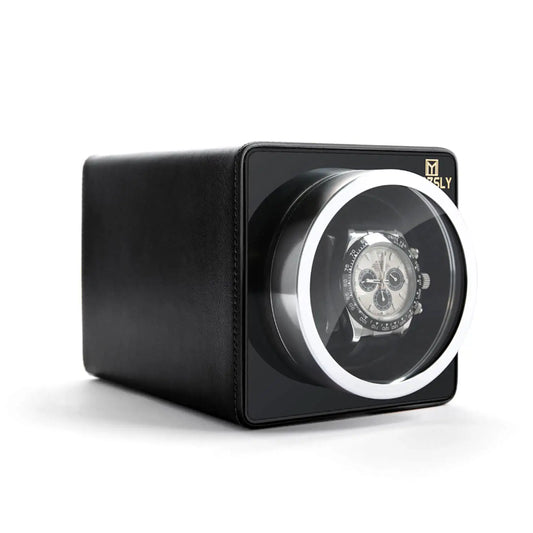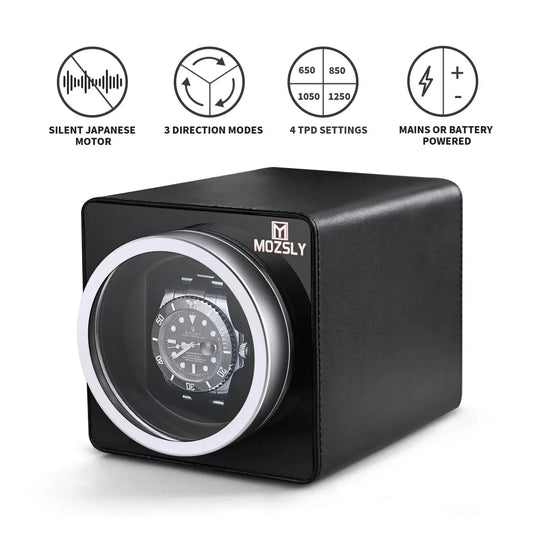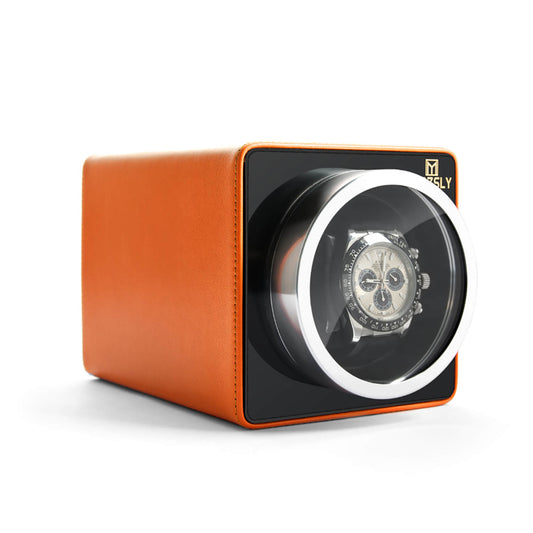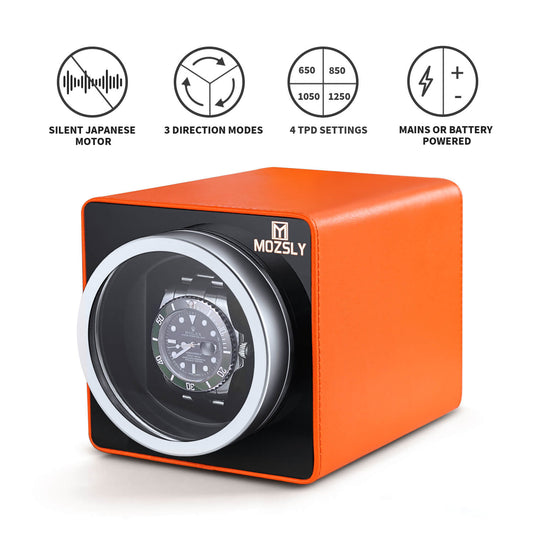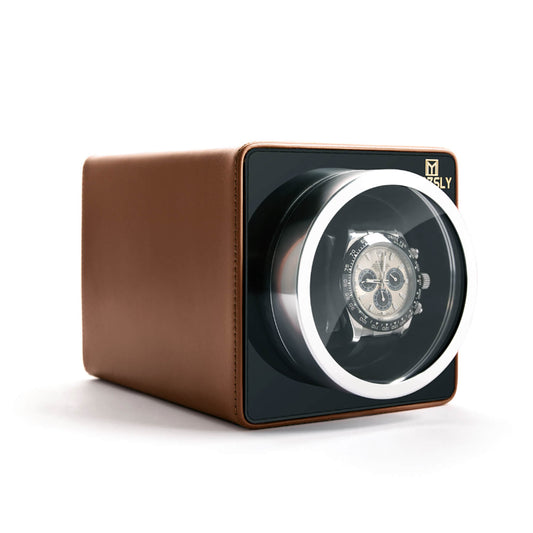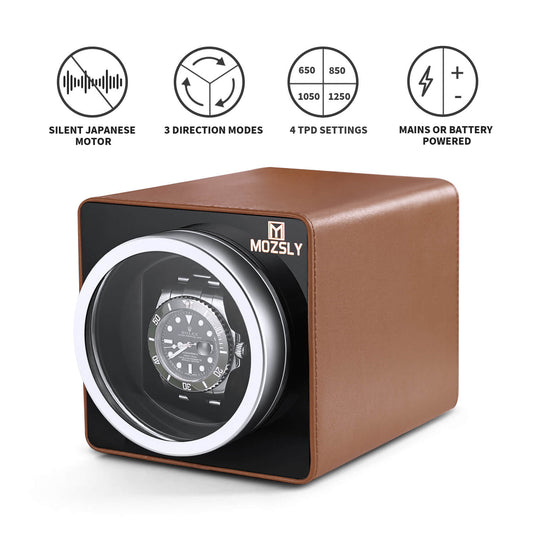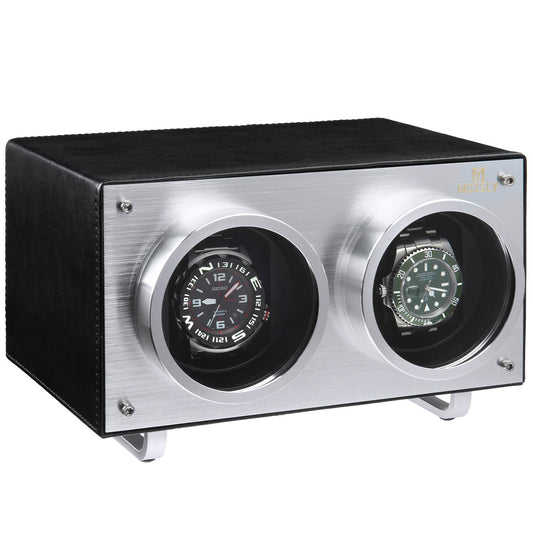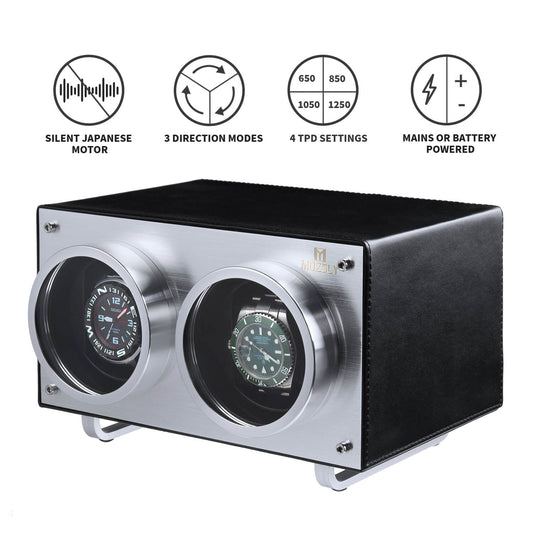Find the perfect watch winder for your automatic watch
Find the perfect watch winder for your automatic watch
Not only are watch winders a very useful and fulfilling tool in growing and maintaining your watch collection, but they also provide a different way to appreciate and display the time you spend at home.
Opinions about the usefulness of winders are also growing, and today you will find them as subject of debate on the internet as any particular watch product, given all the opinions circulating and discussed online, it's worthwhile to post about a watch for yourself. When it comes to articles, it can be hard to know where to start. We've put together this guide to help you determine how much use and enjoyment you (personally) can get from winding your watch.
What to look for when buying a watch winder?
When shopping for a watch winder, look for the aesthetics you like and check out its features.A watch winder shouldn't just look great on a dresser or work great - it should do both! When shopping for your first watch winder, you need to consider eight key factors, such as how many watches it can hold, its portability, power supply, program settings, material quality, and the machine's noise level. While all watch winders have the same function—winding an automatic watch when not worn—of course not all watch winders are created equal.
Eight Key Factors to Remember When Buying a Watch Winder
1.The number of watches your winder can hold.
Watch winders come in different shapes and sizes, so the first thing you should pay attention to is how many slots a watch winder has. The number of slots indicates the number of watches that the device can hold. It's also important to note how many automatic watches you own.
Watch winders only work with automatic watches, so you only need enough slots to fit that type of watch - not for your mechanical, powered or quartz watch. Of course, you can still put these other types of watches in the winder; it won't do anything.
In addition to knowing how many (automatic) watches you own, it's also important to know if other watches are coming soon. You don't want to buy a watch winder that holds two watches, only to buy a third or fourth watch in a few weeks or months. It's better to just expand it a little bit!
2.How portable is the watch winder?
After you have determined how many watch slots you need, consider how and where the watch winder will be used. Do you travel a lot for business or business? If you're the travel type, or you have to leave for work, a small and compact watch winder is the way to go.
These are usually a bit larger than your watch's original box and can easily fit in a safe when you're staying in a hotel. Compact watch winders are usually battery powered, so you don't have to worry about finding power or leaving your precious timepiece outside a safe. Alternatively, if portability is not an issue, you can get a larger AC powered watch that winds up and has to be plugged into a power outlet to work. These are not as easy to carry. Some devices may be the size of a gift box, while others are the size of a full-size standing safe (these are watch-winding safes built in, but we'll get to that later!).
Regardless of the size of the clockwork on the watch, most people choose to keep the device in their bedroom or closet, whether it's on a dresser, a shelf, or on the floor.
3.What power supply does your watch winder need?
Next, you need to consider where the device must get its power from. Whether you're out and about, traveling in and out of hotels, most compact watch winders run on AA batteries, called DC watch winders. With these watch winders, you can usually get 6-12 months of battery life. Some brands design their compact devices with the option of plugging into a wall outlet via an AC/DC adapter. Larger watch winders are usually powered by being plugged into a wall outlet. These are AC powered watch winders.
We recommend looking for a watch winder that balances the two power sources, so look for devices that use rechargeable batteries and that can be equipped with a power adapter. This opens up two options for you. If you're just at home, plug it into a power outlet, and if you're traveling or have a power outage, it can run on battery power.
4.What are the program settings for the winding machine?
Programming is another important factor when choosing a watch winder. Look for devices with multiple programmable turning direction options for turning every day (TPD) so every automatic watch in your collection can be fine-tuned accordingly. Different watches require different minimum revolutions per day, and this setting also varies by watch winder.
For example, watches from the Swiss luxury brands Rolex and Omega require about 650 revolutions a day to fully wind; Patek Philippe needs an average of 800. If you're not sure what program settings or revolutions your watch needs per day, you can look it up in the user guide or search online for your watch model.
You also need to check that the winder can rotate the watch in both directions, that is, multiple directions: clockwise and counterclockwise. Orientation changes help your watch fully charge as if it were on your wrist.

5.Clockwork noise and light effects on the watch
While it may seem trivial, noise levels are something to consider and not everyone is affected by noise and light in the same way, so this can be a bit subjective. Fortunately, most watch winders today are silent, silent, or do not emit more than a faint hum when operating, whether plugged into a wall or powered by a battery.
Although many machines have improved from the disturbing noise of the past few decades, machine noise remains a common complaint among watch winder owners. If you're sensitive to noise, it's definitely worth investigating beforehand.
If you keep the device in your bedroom, you should also check that the watch winder in question doesn't have too many/too bright lights that might prevent you from dozing off. The light might look really good if not in the bedroom.

6.How the watch is placed in the clockwork
Check how your watch will fit in the watch winder. Ideally, the watch should be placed vertically or nearly vertically. A watch that is placed vertically adjusts its rotor more efficiently than a watch that is placed horizontally, due to the force of gravity during each rotation.
The vertical position of the watch winder also helps the watch gears not get stuck or stalled. Luckily, most watch winders have a (near) vertical position for the watch, but it's always nice to give it an extra look.
7.Does the winding machine include a table stand, cushion or pillow
The watch winder will have a stand for you to place the watch on so it can spin without falling off. Cushions and pillows are the most common, but make sure it's soft enough to fit your watch without overstretching it. Keep in mind that not everyone has the same wrist or bracelet size, so one size watch frame may not fit everyone.
On the other hand, some watches may have a spring support on the mainspring. These give your watch better tension to hold it in place than pillows and cushions.
Ultimately, your watch winder should have stand options for a variety of watch and strap sizes.
8.How does the watch winder look?
Finally, think about how the look of the watch winder will coexist with your current collection and decor. Watch winders come in different shapes (square, round), sizes (compact, arched) and colors (silver, orange and black).
Watch winders are not only functional, but they also look beautiful and elegant. Many people like to show their watch winder, whether they actually use it or not. And if you do buy one for functionality, there's no reason why you shouldn't get a watch that looks as good as the one you're putting it in, right?

What is the difference between cheap and expensive watch winders?
Less-expensive watch winders are still great tools for your collection, even if they may not have the same robust features or high-quality safety precautions as pricier devices. Affordable options start at around $50.
Less expensive winders may not be able to rotate your watch in multiple directions, and may not have a rotation setting timer to pause the process, giving your watch the necessary rest. Cheaper springs also won't hold more than two or so watches.
Thanks for reading. If you want to learn more about and watch winders, you can browse our blog, there is a variety of information for your reference. If you have any questions, please feel free to contact me.



